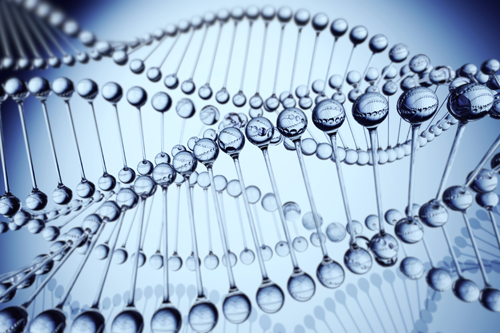 Imagine a scar turning back into living, thriving tissue. Or a cell originally meant to develop into a specific organ becoming capable of turning into any kind of organ. Sounds like science fiction. But these possibilities are closing in fast, thanks to the pathbreaking field of epigenetics.
Imagine a scar turning back into living, thriving tissue. Or a cell originally meant to develop into a specific organ becoming capable of turning into any kind of organ. Sounds like science fiction. But these possibilities are closing in fast, thanks to the pathbreaking field of epigenetics.
Epigenetics goes beyond the boundaries of what’s possible in changing the function and purpose of a cell. Previously, this alteration required a chemical process that changes the DNA sequence in the cell’s genetic makeup. With epigenetics, gene function can be altered without changing the DNA sequence chemically. Instead, it changes the architecture of the nucleus of a cell that contains the DNA. Epigenetics achieves this by exposing a cell to electromagnetism, which is a kind of magnetism produced by an electric current. Amazingly, the electromagnetic signals used in epigenetics are similar to those produced by the human heart and on Earth itself.
Imagine an organ with damage considered beyond repair returning to a state before the damage occurred! With epigenetics, this type of rebirth may someday be possible.
Epigenetics makes it possible to turn specialized adult cells back into the nonspecialized stem cells they once were. Stem cells are present in us while we are still embryos. But very early in our development, they start changing dramatically. These changes specialize the cells for a particular organ or body tissue. It was previously thought that, once specialization occurs, the change is permanent. Epigenetics demonstrates otherwise.
Equally fascinating in this presentation were findings that components of cells vibrate, with specific frequencies that make a kind of cellular fingerprint distinctive to the person. Learning the language of these vibrations may allow us to “talk” to DNA. By changing the vibrations, we may be able to differentiate cells to match what’s needed to repair different organs.
Electromagnetic stimulation can also enhance expression of genes important to certain body functions, such as cardiac contraction in the heart. Dr. Ventura reported that magnetic fields have actually been able to make cells of cardiac tissue in a laboratory culture beat like a living heart.
Equally fascinating in this presentation were findings that components of cells vibrate, with specific frequencies that make a kind of cellular fingerprint distinctive to the person. Learning the language of these vibrations may allow us to “talk” to DNA. By changing the vibrations, we may be able to differentiate cells to match what’s needed to repair different organs.
Some of the most eye-popping findings presented by Dr. Ventura were from a revolutionary experiment conducted by Nobel Laureate Luc Montagnier. Montagnier placed a test tube containing a fragment of DNA next to a second test tube containing only water. After exposing the DNA test tube to a magnetic field, a nearly identical copy of the DNA fragment was virtually “teleported” via electromagnetic signals to the test tube of water! “DNA is important,” noted Dr. Ventura, “but information is not simply stored in genes, but also in shape and architecture. And architecture communicates with environment.”
Clearly, the capability to reproduce these results with whole cells could launch tissue regeneration into an exciting new age.
When Dr. Ventura’s discussions occasionally rose into the technical stratosphere, moderator Dr. McCraty deftly translated his pronouncements into more accessible language. But regardless of the vocabulary, the meaning was clear: epigenetics is destined to revolutionize the possibilities for reclaiming and advancing human health.
Download the free webinar.




1 Comment
Sondra Barrett
Wonderful article and yet our cells can change beyond changing genetic expression and they are vibrating all by themselves. The inside of our cells are strings and tubes, capable of responding to electromagnetic energy, like sound, as well as giving off some of their own. Now we can understand better how yoga, qigong, chant work at the cellular level. Here are a few relevant posts on the subject – http://sondrabarrett.com/?s=vibration. Lots more in new book Secrets of Your Cells from Sounds True. http://www.soundstrue.com/shop/Secrets-of-Your-Cells/4336.pd